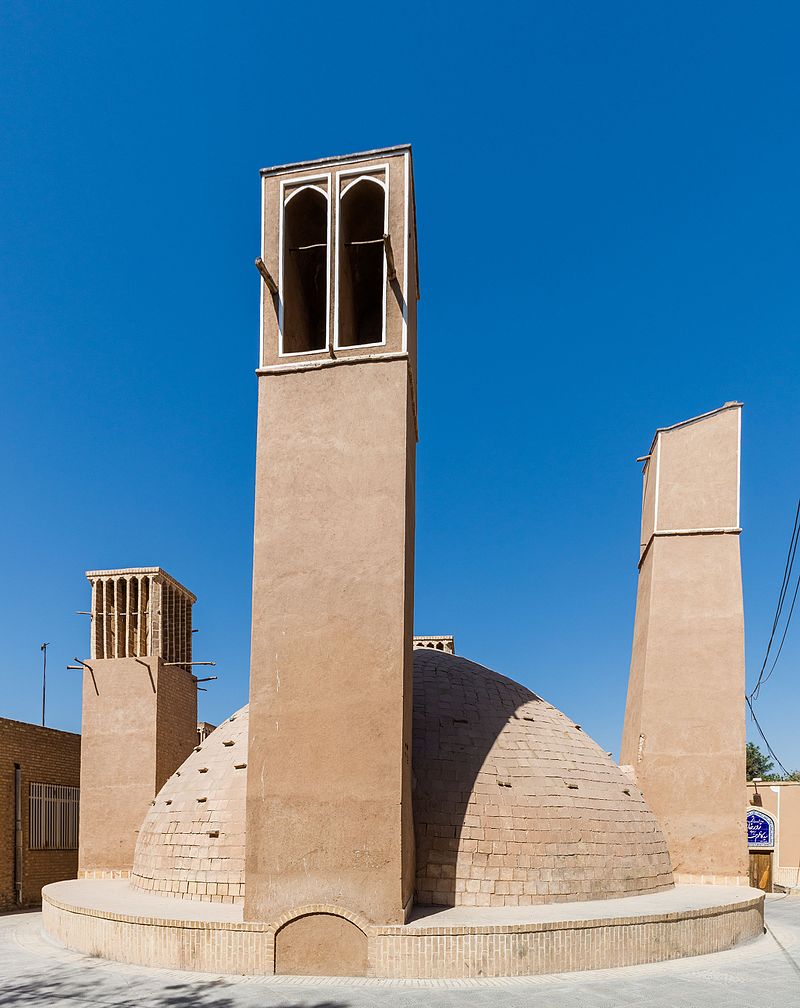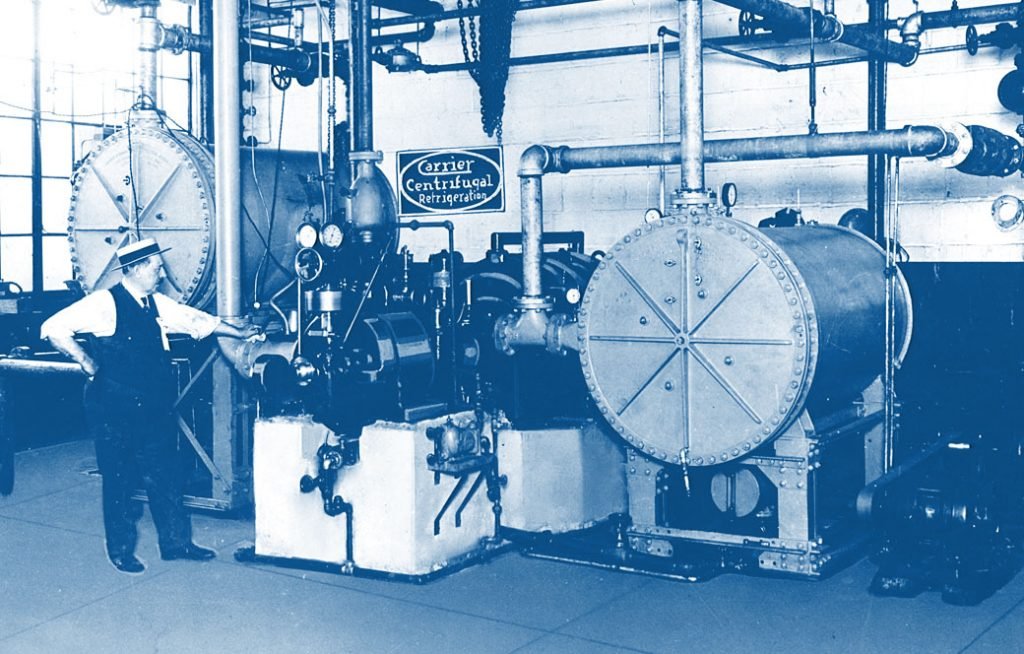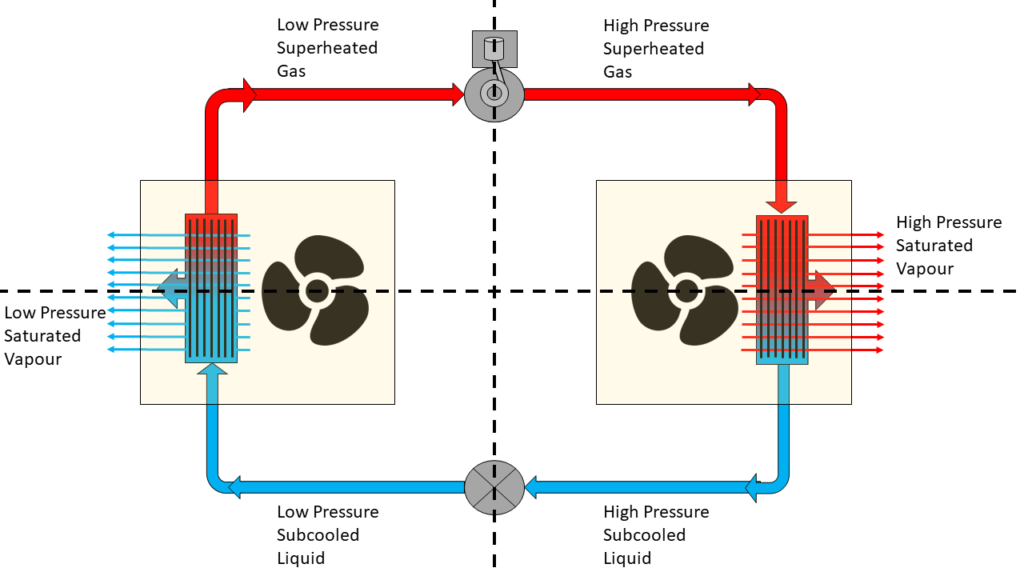The principle of operation of the air conditioner
Here we will talk about the history of Air Conditioning. From the very beginning of human history, people wanted to live in comfortable conditions: to sleep at night and not wake up from the unbearable heat or chattering teeth, wrapped in a bison skin. Modern living conditions provide such an opportunity. And we owe much of this to air conditioners and other HVAC systems.
In this article, I would like to tell you the history of the creation of a household air conditioner, its principle of operation as well as share interesting facts. And maybe, in the morning, when you come to work and pour yourself a fresh hot coffee, you will be distracted from routine affairs and will find something new and interesting for yourself in this article.

Windcatcher
Badgir is a windcatcher or a tower that runs through the entire building from the lowest rooms and rises high above the roof. The inside of the badgir is divided by two perpendicular and parallel walls. Badgirs are of different types: one-, two-, four- and eight-directional. They can include containers with water or channels in which it flows. Badgir design depends on terrain and wind direction.
Badgir is a tower that runs through the entire building from the lowest rooms and rises high above the roof. The inside of the badgir is divided by two perpendicular and parallel walls. Badgirs are of different types: one-, two-, four- and eight-directional. They can include containers with water or channels in which it flows. Badgir design depends on terrain and wind direction.
But all structures have one type of work: the wind gets into the upper holes that go inside the building. Under the pressure of the wind from the windward side, the airflow descends into the rooms and displaces the air heated in these rooms. There is constant natural air circulation, and it helps to create more comfortable conditions even in the hot desert. The holes at the top of the badgir can close when the daytime temperatures become unbearable or a sandstorm is imminent.
In Egypt it is also called “malcaf”, and in the UAE – “bardjil”.
The First Attempts to Create an Air Conditioner
Many people have tried to create a device that would cool the air in the room. For example, John Gorrie, an American physician who studied tropical diseases, cooled hospital rooms with a bowl of ice suspended from the ceiling. The heavy cold air was directed to the bottom of the room, towards the patient, and then exited through an opening near the floor.
This is how the influence of conditioned air on humans was studied. The fact is that at that time there was a hypothesis that the cause of malaria was bad air. From the Italian mala aria – “bad air”. John Gorrie used the work of Oliver Evans, who worked with steam engines and noticed that the gas, expanding, “cools”. At the same time, Jacob Perkins continued to refine this idea and, by improving the engine’s design. He received a patent for “Apparatus and means for the production of ice and coolants” in 1835. Therefore, John Gorrie was able to obtain a patent for an “improved artificial ice-making technology” in 1851.

Real Breakthrough In Air Conditioning Technology
However, all of the above attempts did not have much success. The real breakthrough came in 1902 in America. And, as often happens in life, the creation of the air conditioner did not happen on purpose. The fact is that the inventor engineer Willis Carrier worked at the time at Brooklyn printing house. Carrier assembled a machine to dehumidify the air. High humidity in the room negatively affects the print quality, in the summer. The paper dries or swells when the humidity changes, the color ink, and the image turns out to be blurry.
Air conditioning (“to condition” – “to improve something to the desired state”). It was used by textile engineer Stuart Kramer at the Textile Manufacturers Convention in Charlotte, North Carolina in May 1906 in relation to Willis Carrier’s machine: “I used the term air conditioning to include general concepts in air handling – humidification, cleaning, heating and ventilation of air “.

In 1915, Willis Carrier and six of his friends formed Carrier Engineering, which continues to this day. They have taken the real first steps in indoor comfort. In 1924, an air conditioning system was installed in one of the major department stores in Detroit. In the same year, air conditioning systems were also installed in cinemas in Houston, Texas. The flow of people to the cinemas was simply breathtaking; in a matter of days, the turnover of cinemas more than tripled. Between 1922 and 1930, over 300 cinemas across America were air-conditioned.
In 1929, the equally famous General Electric (GE) company, founded by Thomas Edison, released the first split-system. This device used AMMONIA, the vapors of which are unsafe for human health, as a result of which the compressor and condenser of the air conditioner were taken out into the street.
Air Conditioning Split System
A split system is an air conditioning system that consists of two parts: one outdoor unit and one indoor unit, interconnected by copper pipes containing the refrigerant.
The first air conditioners used toxic gases such as ammonia and methyl chloride, which were very toxic. Thomas Midgley Junior was the first to propose the use of difluorochloromethane, later called freon, as a refrigerant. By the way, FREON is a Dupont trademark for all CFC, HCFC, or HFC refrigerants. It is more correct to call the refrigerant R (Refrigerant – refrigerant, refrigerant) In those years, Thomas MidgleyJunior worked at General Electric, so the first split system operating on freon appeared in 1931 from General Electric.

Let’s take a look at the refrigeration cycle of a refrigeration machine:
This cycle is applicable for each air conditioner
Fans – located in the indoor and outdoor unit of the air conditioner, create air flows blowing over the condenser and evaporator.
Metering device – used for limiting the supply of liquid or regulating the flow of refrigerant in the system.
Evaporator – a heat exchanger in which the refrigerant passes from a liquid to a gaseous state due to the heat of the air in the room; it is located in the indoor unit of the air conditioner. The air blown through the evaporator is cooled when the air conditioner is in cooling mode and heats up when the air conditioner is in heating mode (then the evaporator becomes a condenser).
Compressor – supports the movement of the refrigerant in the refrigeration circuit by compressing and supplying it under pressure.
Condenser – a heat exchanger in which refrigerant is condensed due to cooling with outside air; it is located in the external block of the air conditioner. The air blown through the evaporator is cooled when the air conditioner is in cooling mode and heats up when the air conditioner is in heating mode (then the evaporator becomes a condenser).
How does it work?
The compressor compresses the gaseous refrigerant. Then the refrigerant enters the condenser (heat exchanger of the outdoor unit), where, blown by the fan, it cools and condenses. Further, the liquid phase of the refrigerant enters the metering device, reduces its pressure and temperature of the refrigerant. Then it enters the evaporator (heat exchanger of the indoor unit), where, blown by the fan, the refrigerant evaporates, absorbing heat from the air. After that, the already gaseous refrigerant enters the compressor again, where the cycle is repeated. This is how every air conditioner works.
